All about the New Year in the USSR
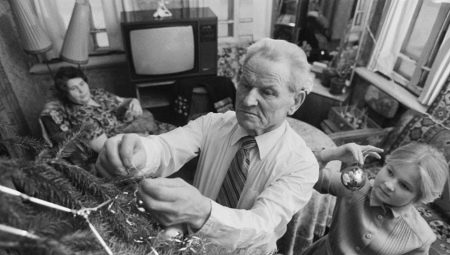
A decorated Christmas tree, a decorated house, a rich table with various delicacies, gifts. All this is an integral part of the New Year. However, the modern realities of the celebration differ in many respects from the period of the existence of the USSR. Moreover, there was a time when the New Year, with its main attribute, was completely banned.
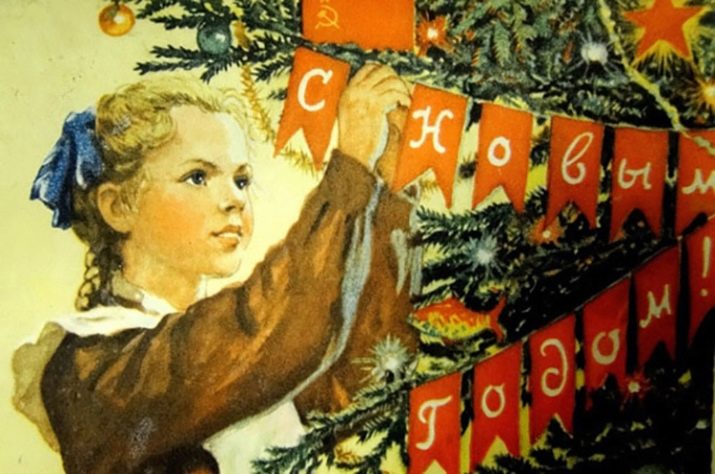
History
The history of the origin of the New Year holiday in the USSR is very interesting and very unusual. It's worth starting from 1917. It was then that Russia changed the Julian calendar to the Gregorian one. For this reason, there was a shift in the New Year holiday in the midst of the Christmas fast.
This fact was to the liking of the God-fighting Bolsheviks. After a while, the party began to oppose Christmas, and the New Year fell under the wave of the ban.
For more than 5 years, Soviet society spoke about the Christmas holidays and the New Year only from a negative point of view. but another surge of aggression occurred in 1928, when an advertisement appeared in the Pravda newspaper about the distribution of sets of Christmas tree decorations. The anti-religious community took up arms against the publication, bombarding the editorial office with angry letters, some even suggested closing the newspaper.
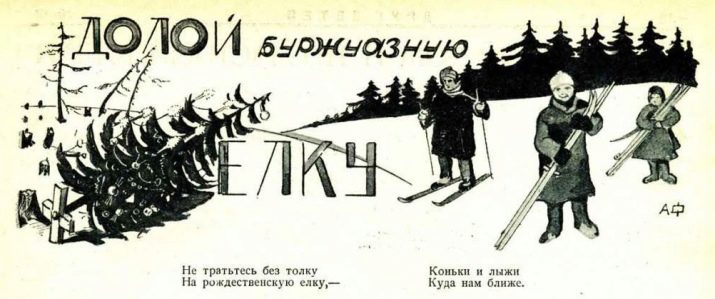
Gradually, the scandal with Christmas decorations was forgotten, and in the mid-30s of the last century, ideologists began to talk about the Christmas tree as an important part of the New Year's holiday, without mentioning Christmas. Thanks to this, in 1935, by order of Postyshev, a member of the Presidium of the Central Executive Committee of the USSR, the first mass matinee for young children was held in the city of Kharkov. And almost a year later, it was decided to legalize the New Year, since this holiday is national and is celebrated by the working people.
Already in 1937, the New Year began to be celebrated in full swing. Two large Christmas trees were installed in different parts of Moscow. And on January 1, a carnival took place at the House of Unions. This event gave rise to the tradition of decorating premises in the New Year's style.
In 1938, when considering the installation of the main tree, Stalin made it clear that dividing the New Year tree into main and non-main is wrong. At the same time, an action was organized to deliver gifts to remote corners of the country. Experienced pilots and parachutists not only showed their skills, but also congratulated compatriots on one of the main holidays of the country.
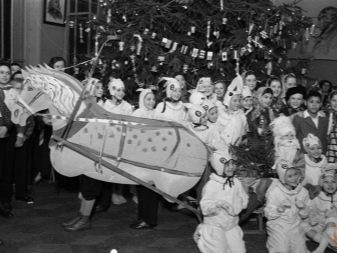

The New Year in 1945 turned out to be a bright and joyful holiday for the Soviet people. The height of the main tree was 26 meters. The actor Preobrazhensky appeared in the role of Santa Claus. This status was held for him for many years. On the main staircase, young guests were greeted by animators in costumes. The children remembered the hare orchestra the most. Various attractions worked in the lobby. In general, the holiday turned out to be one of the best. And only in 1947 it was decided to declare January 1 as an official day off.
After Stalin's death, the New Year tree was allowed to be placed in the hall of the Grand Kremlin Palace... Invitations to the matinee were sent to children by mail. One of the guests was Mark Orlovsky. His father died at the front during the Second World War. All the kids who came to the matinee were happy with the holiday and the opportunity to freely walk around the Kremlin.
A lot of time has passed since then, the Soviet Union collapsed, the common territory was divided into different states. However, much in common remained between them, and first of all - the New Year holiday.
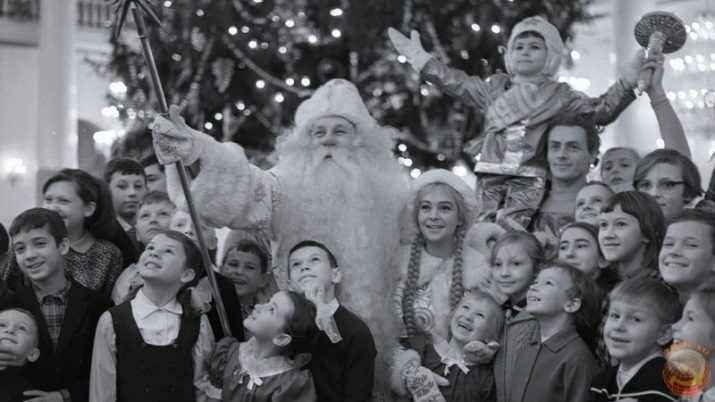
How was it celebrated and when did it start?
From 1918 to 1935, the New Year's holiday had no official status. Everything changed only in 1936. But despite the night festivities, January 1 remained a working day.
Only in the post-war period did the New Year become a real holiday. Christmas tree decorations with the image of the symbols of the USSR appeared on sale. The people themselves came up with interesting toys from paper and other materials. The main thing was that there was a rallying between people, everyone became one big family. The grandparents who have survived to this day recall the post-war New Year celebrations with nostalgia. On this magical night, scarce foods appeared on the tables, gifts were waiting under the tree, and most importantly, the most dear and close people gathered at the festive table.
The purchase of food for the festive table began several weeks in advance. In advance, a few days before the celebration, they set up and decorated a Christmas tree, decorated the house. By the appointed time, the owners of the house met the guests, everyone sat down at the table. Noisy conversations and farewell to the outgoing year were accompanied by interesting films, for example, "The Irony of Fate, or Enjoy Your Bath!"
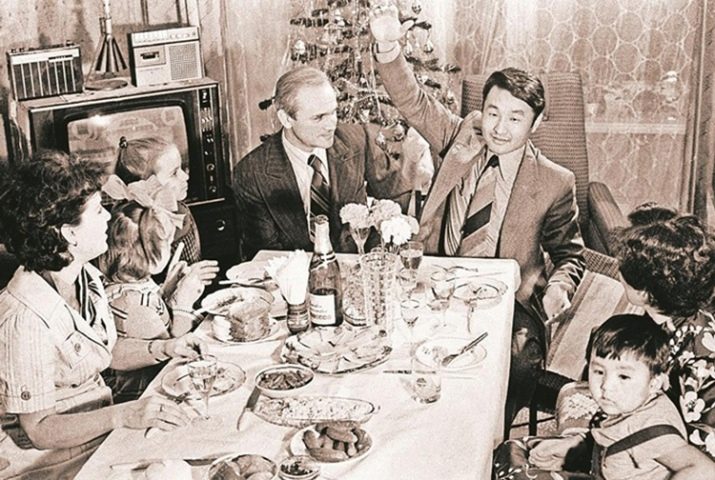
Before the chimes struck, glasses, glasses, glasses were filled. The secretary general appeared on the screen with information about the achievements for the year and congratulations to the people on the upcoming holiday.
As soon as the chimes began to strike, everyone shouted "Hurray!" With one voice. Then the TV screen turned on the "Blue Light", everyone started dancing, singing, having fun. The transmission ended at about 3 am. After her, the program "Melodies and Rhythms of Foreign Stage" was turned on.
Events in honor of the New Year were also organized at enterprises. Instead of a lunch break, employees glued snowflakes to the windows, rehearsed numbers for a corporate concert. People with artistic talent painted the wall newspaper and holiday posters. The leaders of the trade unions agreed on the place and time of the event. Santa Claus and Snegurochka were sure to attend the holiday.
But whatever one may say, the New Year in the Soviet Union was considered a children's holiday.In Soviet times, schoolchildren began to rest on December 31, but for adults it was a normal working day.
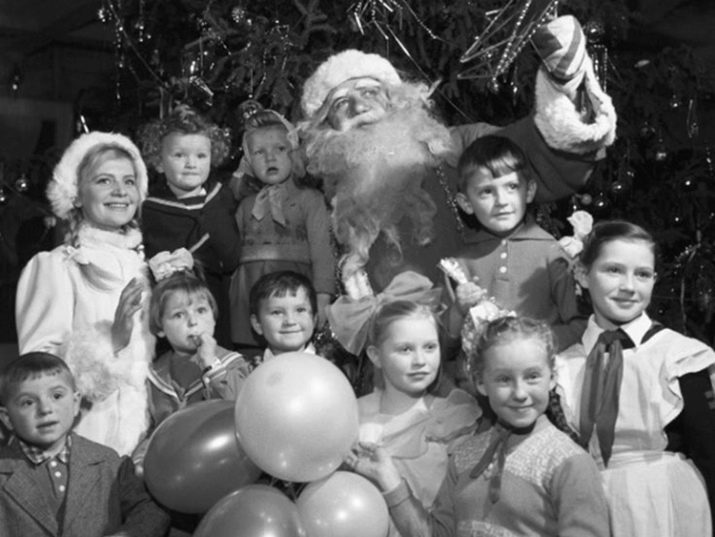
Matinees in schools and kindergartens
New Year's party was an important part of the life of school and preschool institutions. Not only children were preparing for the holiday, but also educators with their parents. Moms sewed suits at night, dads created accessories. Children learned poems, and then told them to Santa Claus near the holiday tree.
An individual program was prepared for each new matinee. New characters, performances, contests were being worked out. In each new performance, Santa Claus or Snow Maiden got into trouble, and the children had to save them. At the end of the holiday, Santa Claus gave gifts to children - sweets in beautiful packaging.
They tried to arrange a New Year's party in the gardens on the eve of the weekend. In schools, the event was organized a few days before the start of the holidays, which lasted almost 2 weeks.
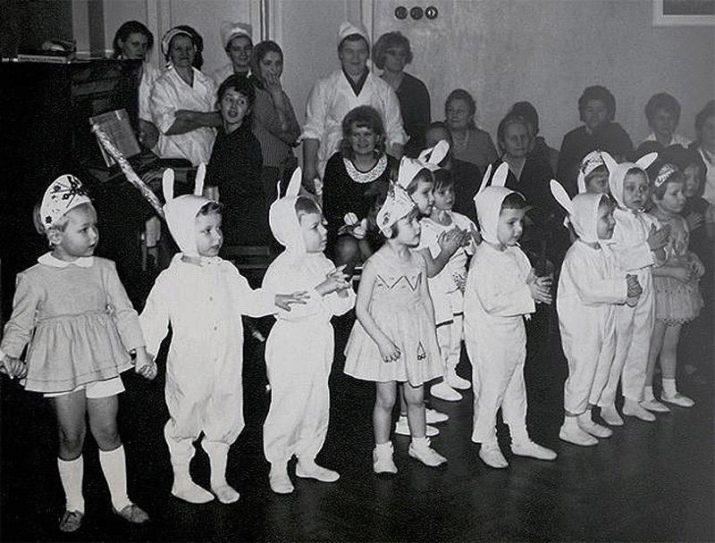
What did you cook for the table?
The shortage of many goods during the Soviet era led to huge queues in stores. And to be sure to get the goods of interest, the hostesses in droves attacked the grocery stalls in advance.
Green peas were very popular. It was this product that was an integral part of the Olivier salad. Cervelat, boiled sausage, salted herring were also on the list of in-demand products for the New Year's table.
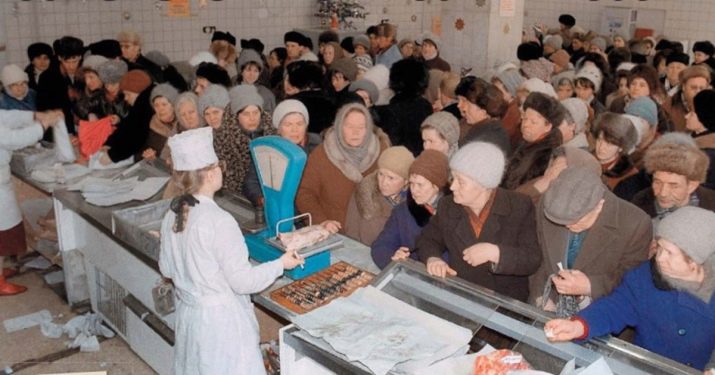
Particular attention was paid to drinks on the festive table. Alcoholic beverages of various strengths were taken from the windows. But the most common was Soviet champagne. The Soviet people preferred home-made compotes to the juices sold.
Chicken and potatoes were baked as a hot dish. Only chickens were considered a deficit and were given a maximum of 2 carcasses per hand.
Not a single New Year's table was left without a large bowl of aspic.
Obligatory salads were "Olivier", "herring under a fur coat", "vinaigrette", "mimosa".

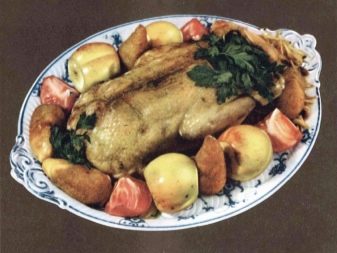
What did you give?
On the eve of the New Year, everyone around congratulated each other "Happy". And for the closest people they prepared gifts.
Dear and beloved women were presented with perfumes, and men - eau de toilette. Wives gave their husbands cufflinks or a tie. Children were presented with sweet sets.
Special attention was paid to greeting cards. They were an integral part of any gift.
The main thing was to choose the congratulatory insert correctly and tastefully. On the reverse side of the postcards there were sections where the sender and the text of wishes were indicated.


How was the interior decorated?
An important part of the New Year's interior is the festive tree. Various toys were hung on it, decorated with tinsel and rain. However, in Soviet times, Christmas tree decorations did not have a wide variety. In the early 40s, toys were made from cardboard and pressed cotton wool. A little later, they began to produce plain glass balls.
Toys in the form of lanterns, houses, birds and clocks looked very beautiful and impressive on the Christmas tree.
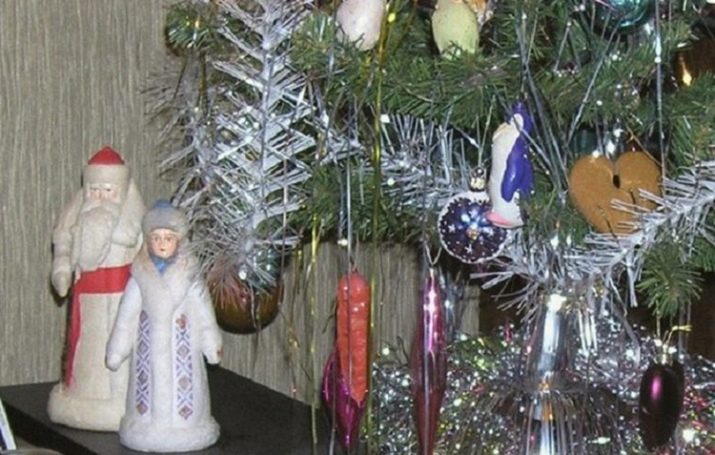
Having achieved success in the space industry, the country noted this in the decorations for the Christmas tree - Christmas tree decorations were born in the form of rockets with the symbols of the USSR. Besides, a series of toys on clothespins was released, and the friendly Soviet people gave them to their friends.
Houses and apartments were definitely decorated. Of course, there was no abundance of New Year's decorations for the interior, so citizens used their imagination and created masterpieces with their own hands. They cut out snowflakes, made beads from colored paper, and attached artificial rain to the ceiling.
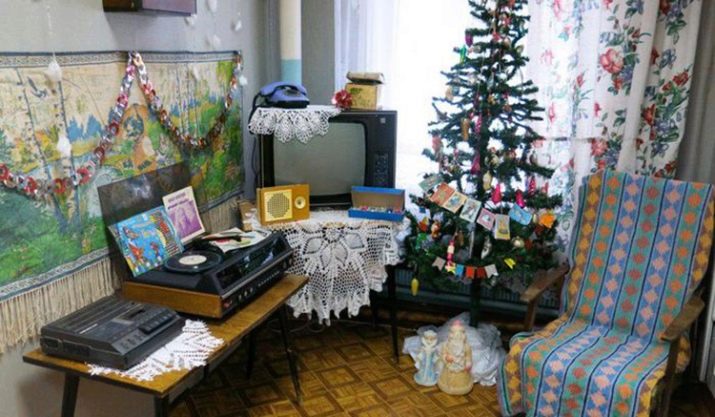
Customs and traditions
The main tradition of the New Year is the address of the head of state to the Soviet people. All residents of the country with glasses in their hands listened to the congratulations and parting words of the secretary general.
Another tradition is to prepare dumplings with a surprise. A coin was invested inside, and whoever gets it will be rich in the New Year.
Another interesting custom of the Soviet era was the exchange of postcards with strangers.
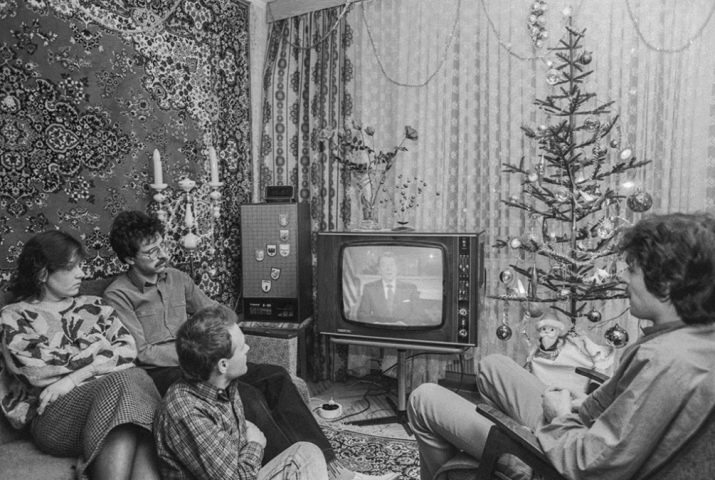
For even more information about the new year in the USSR, see the next video.








